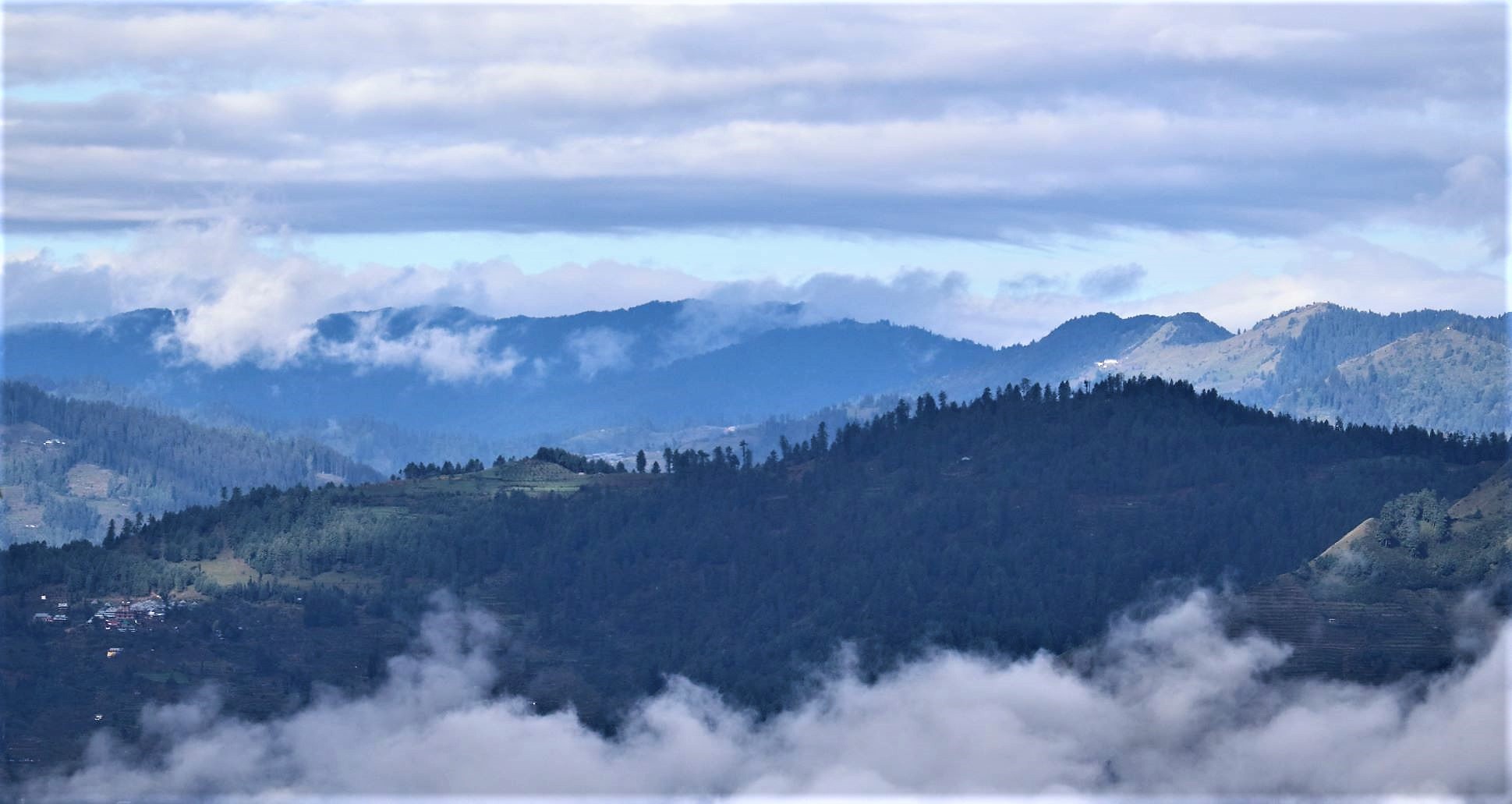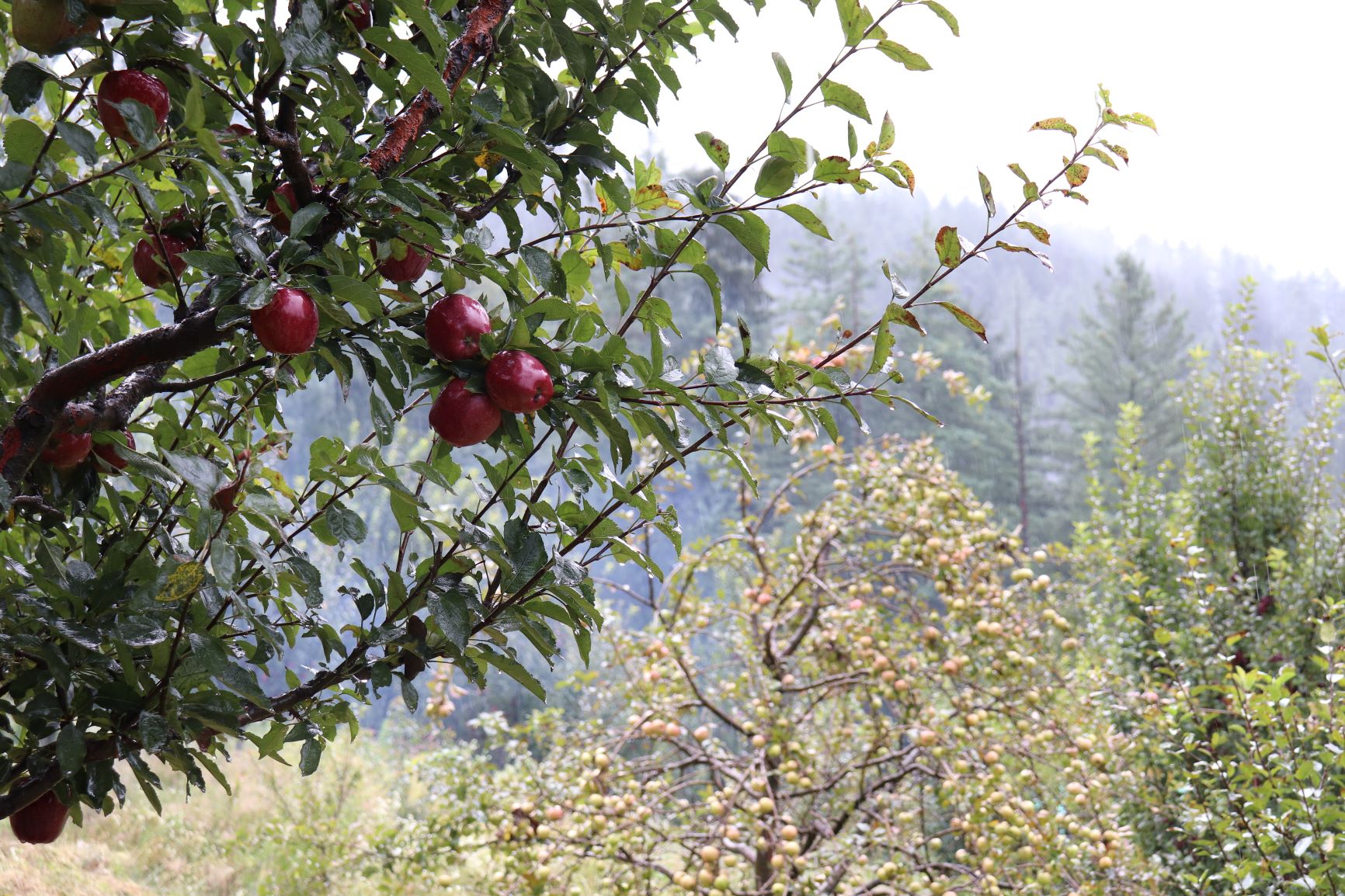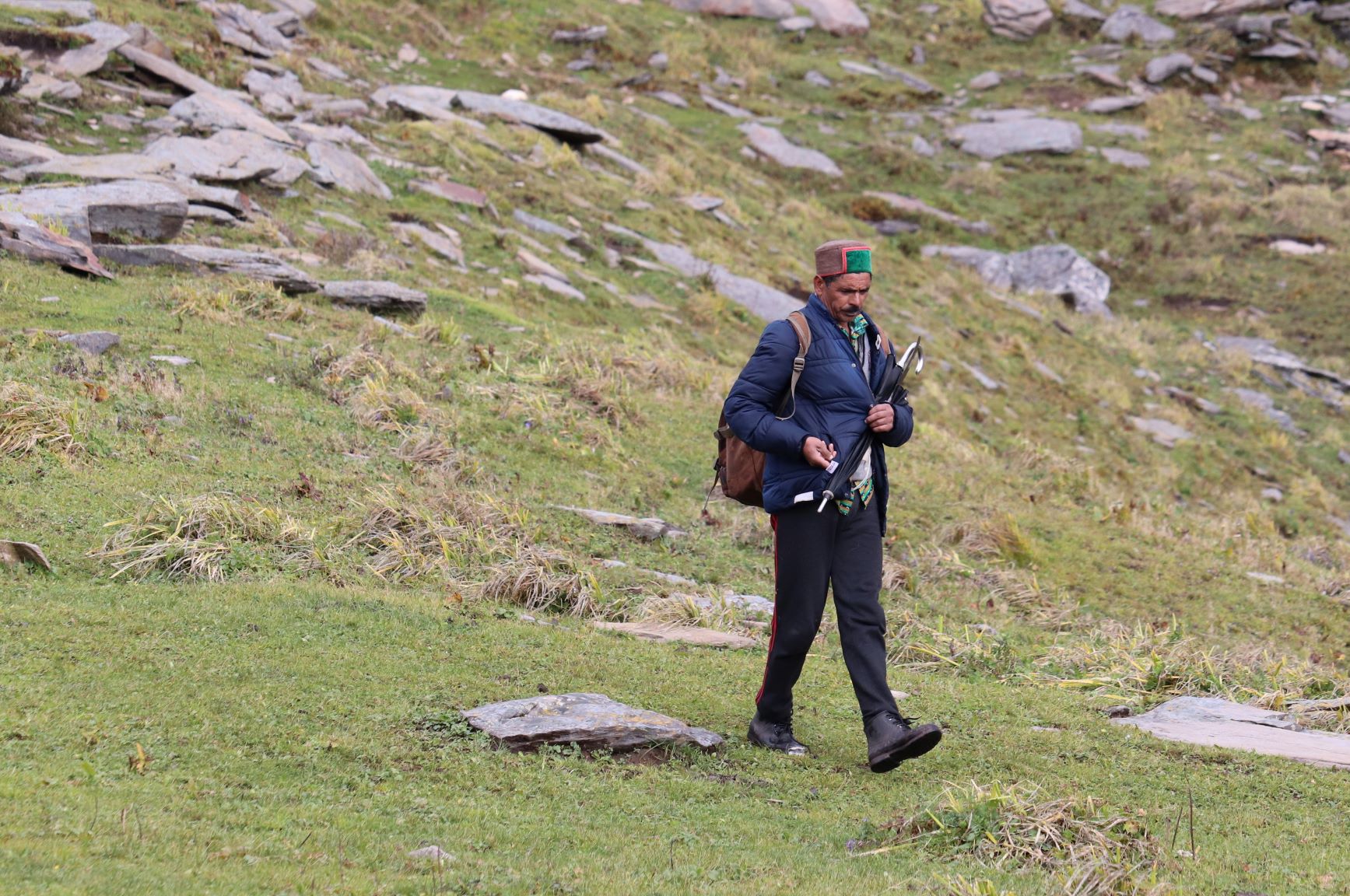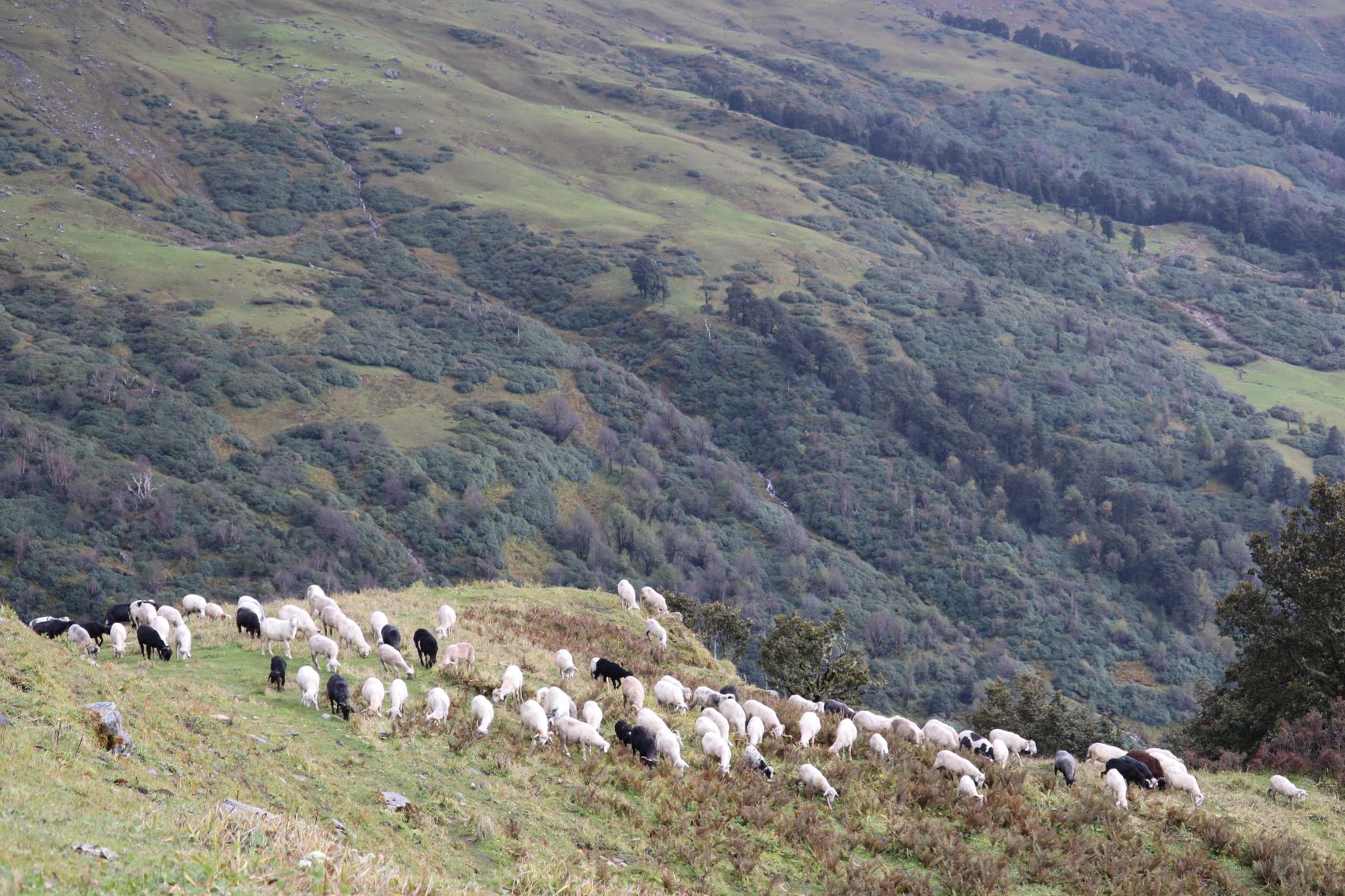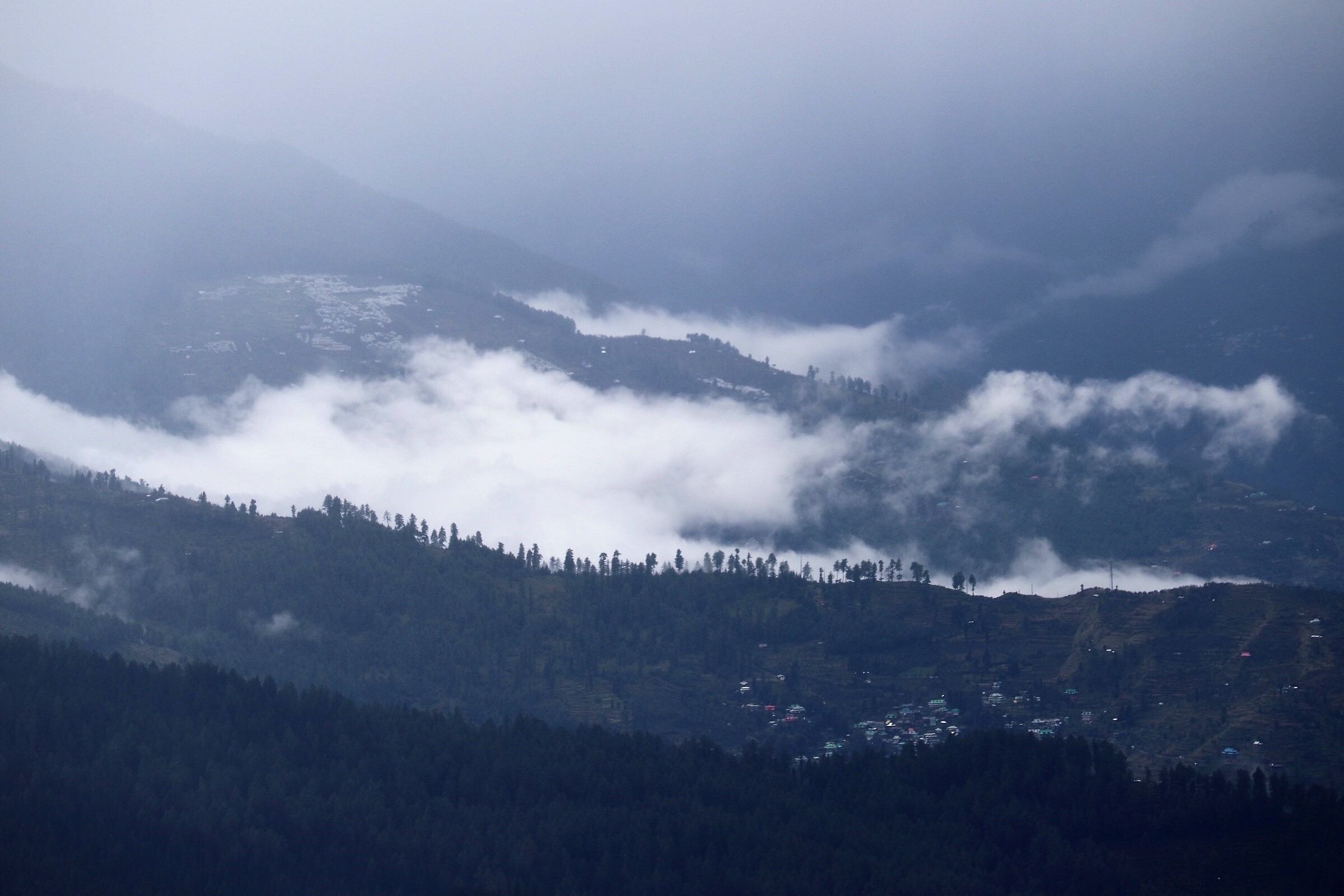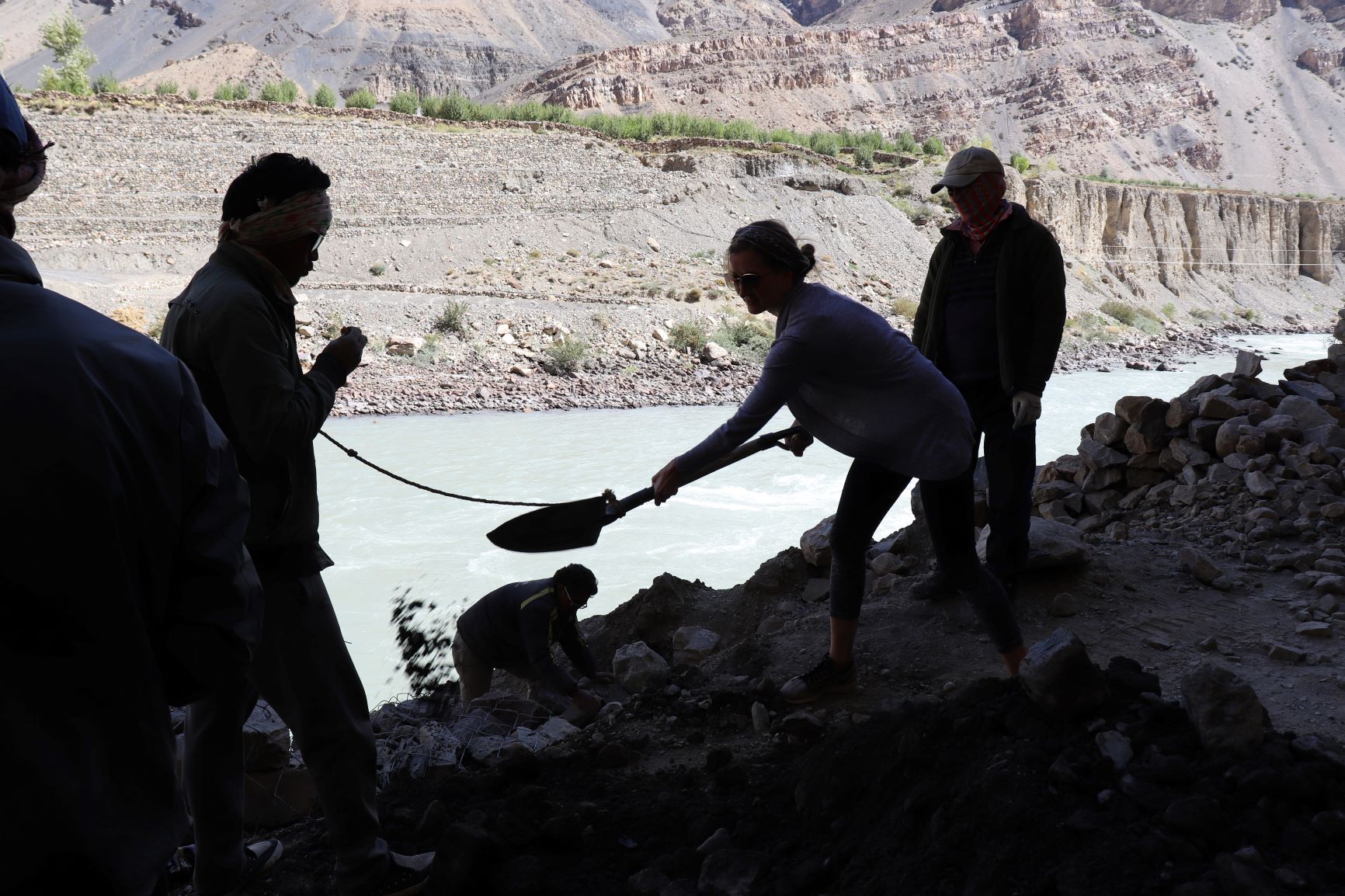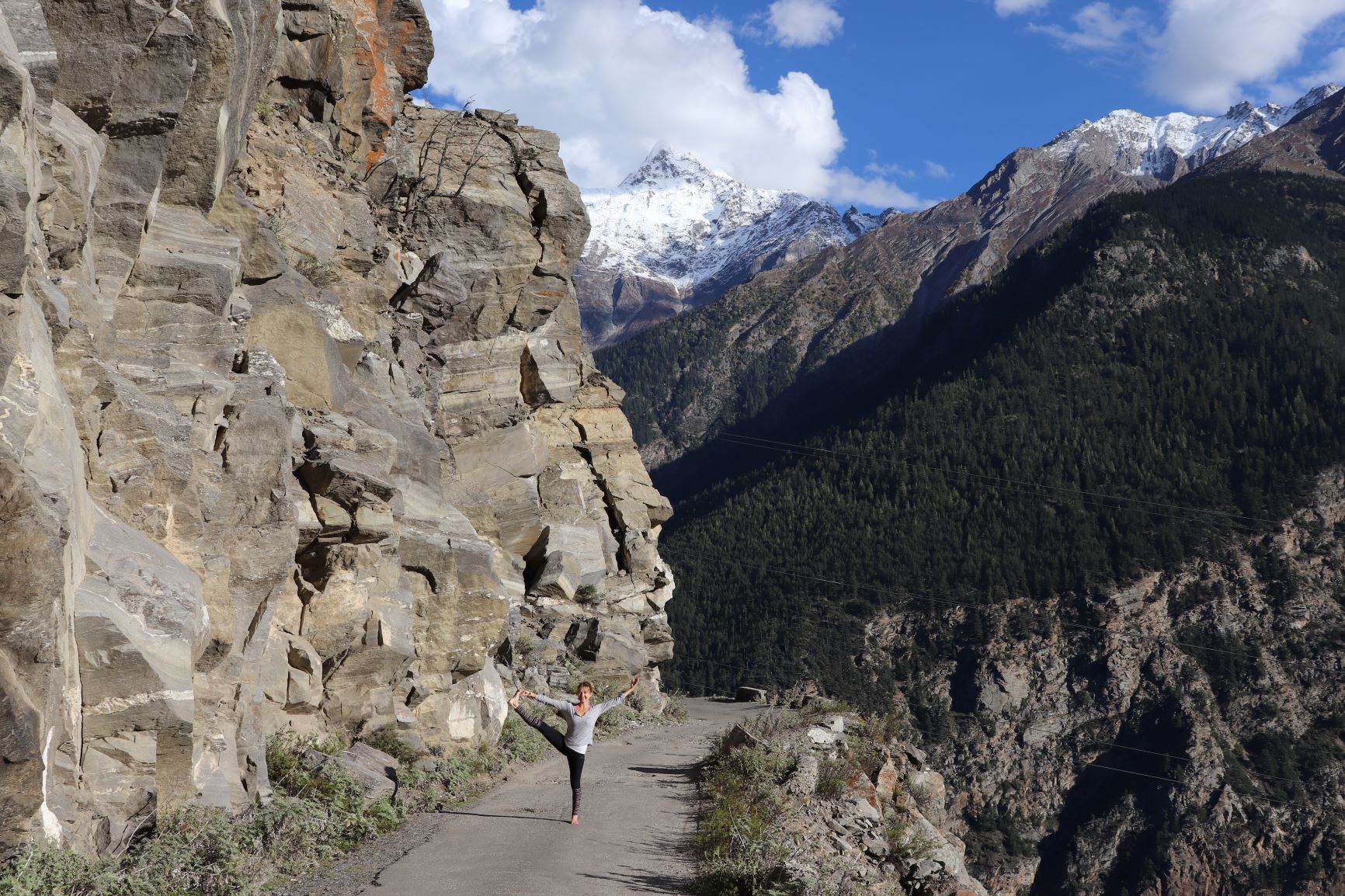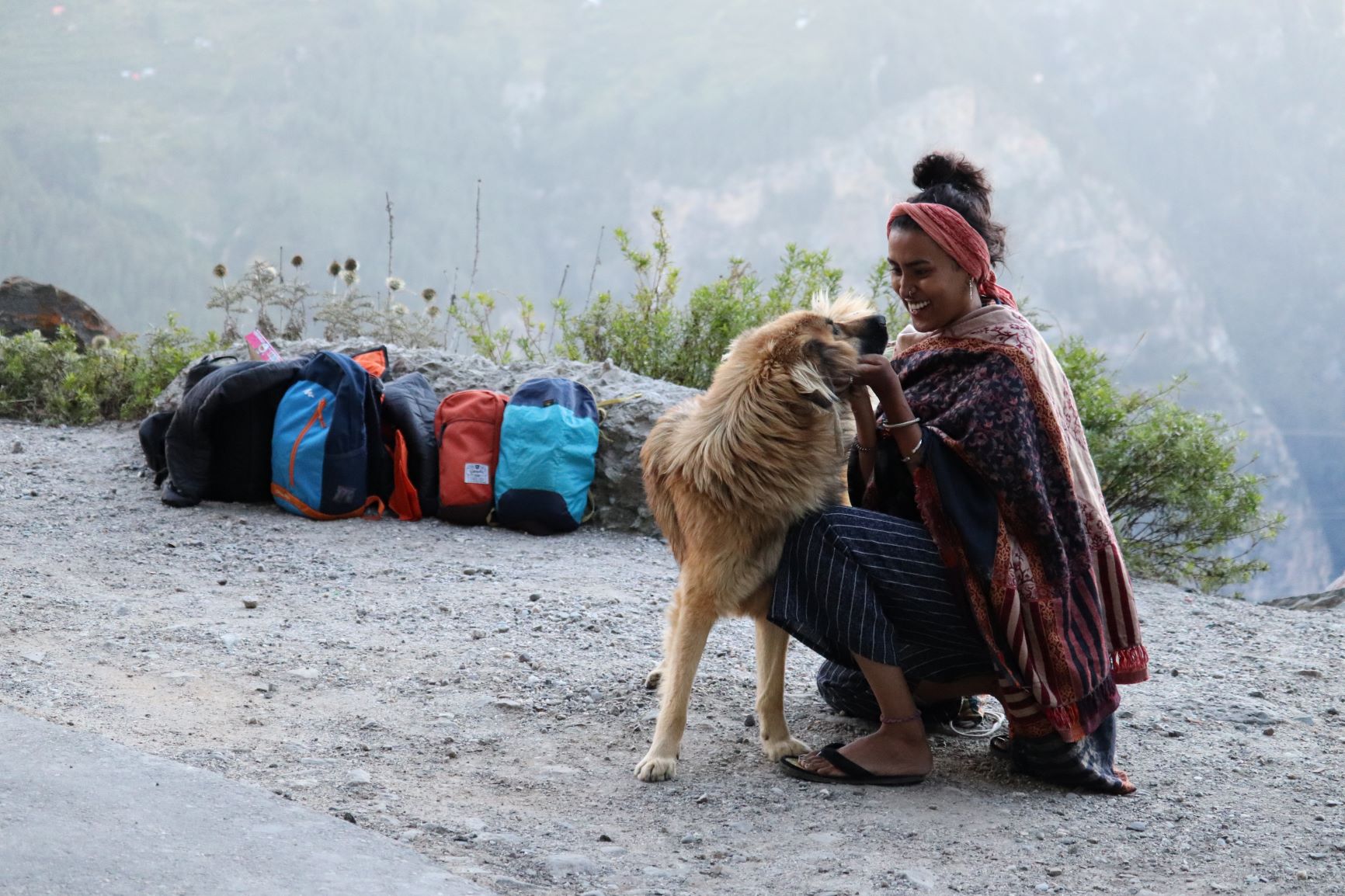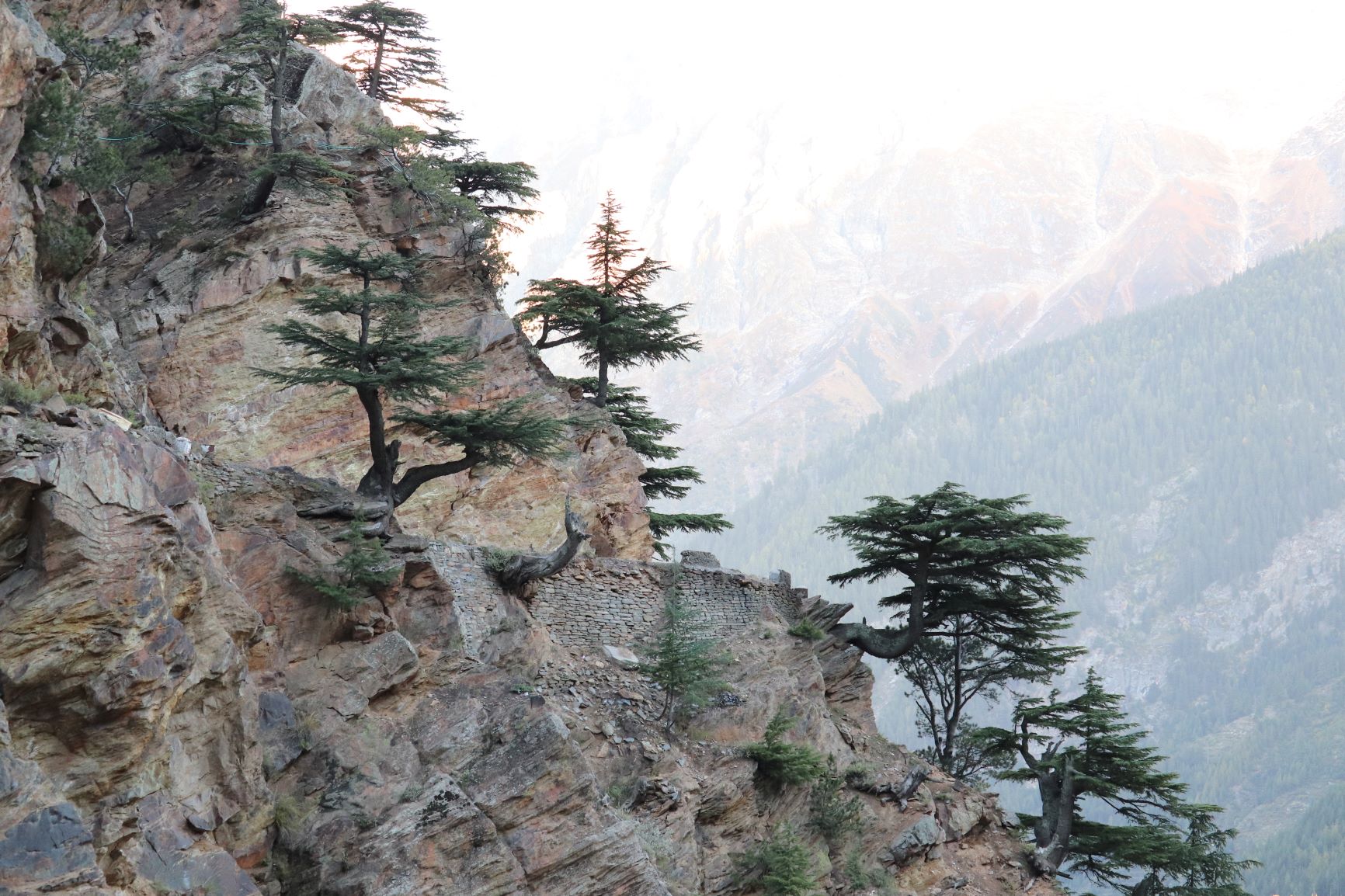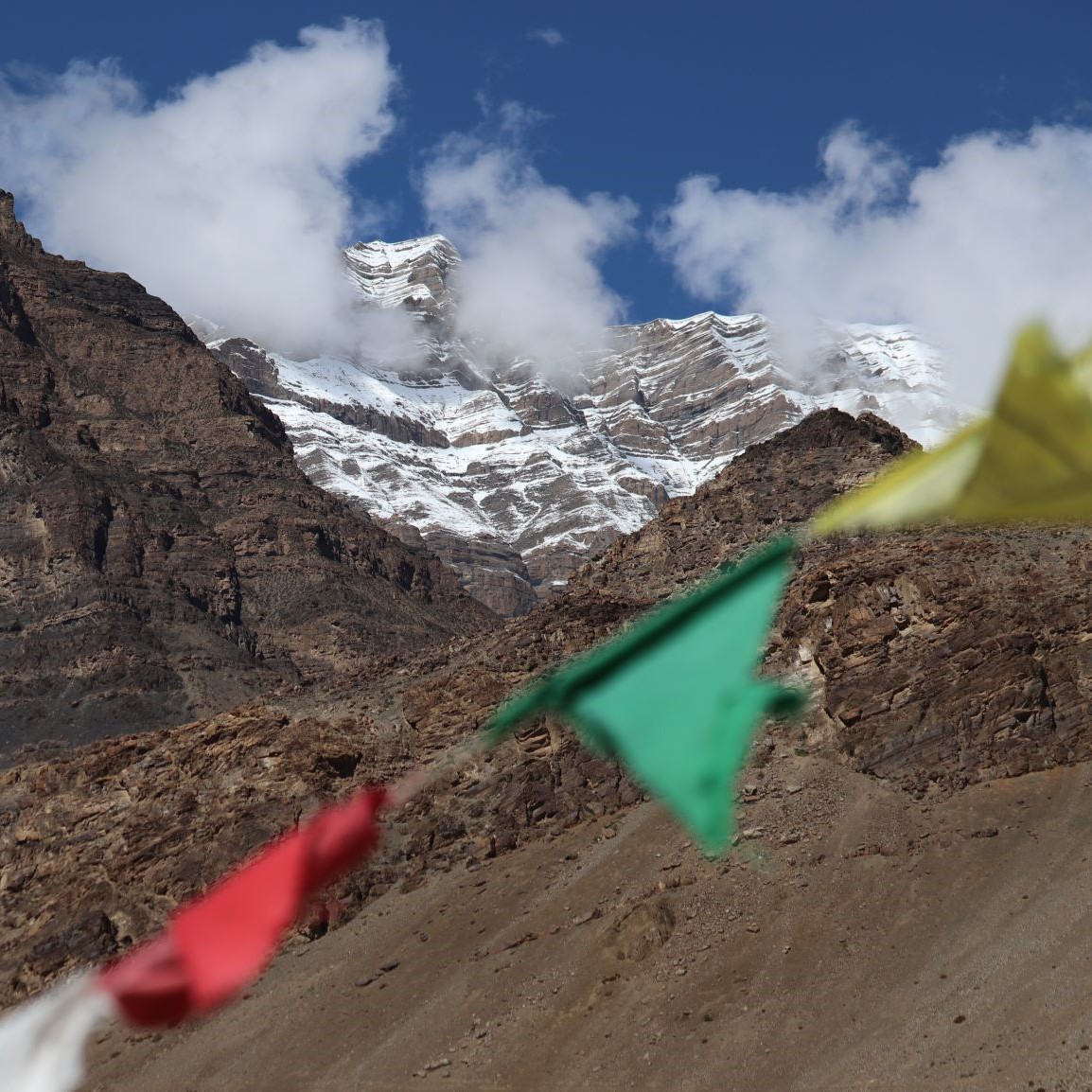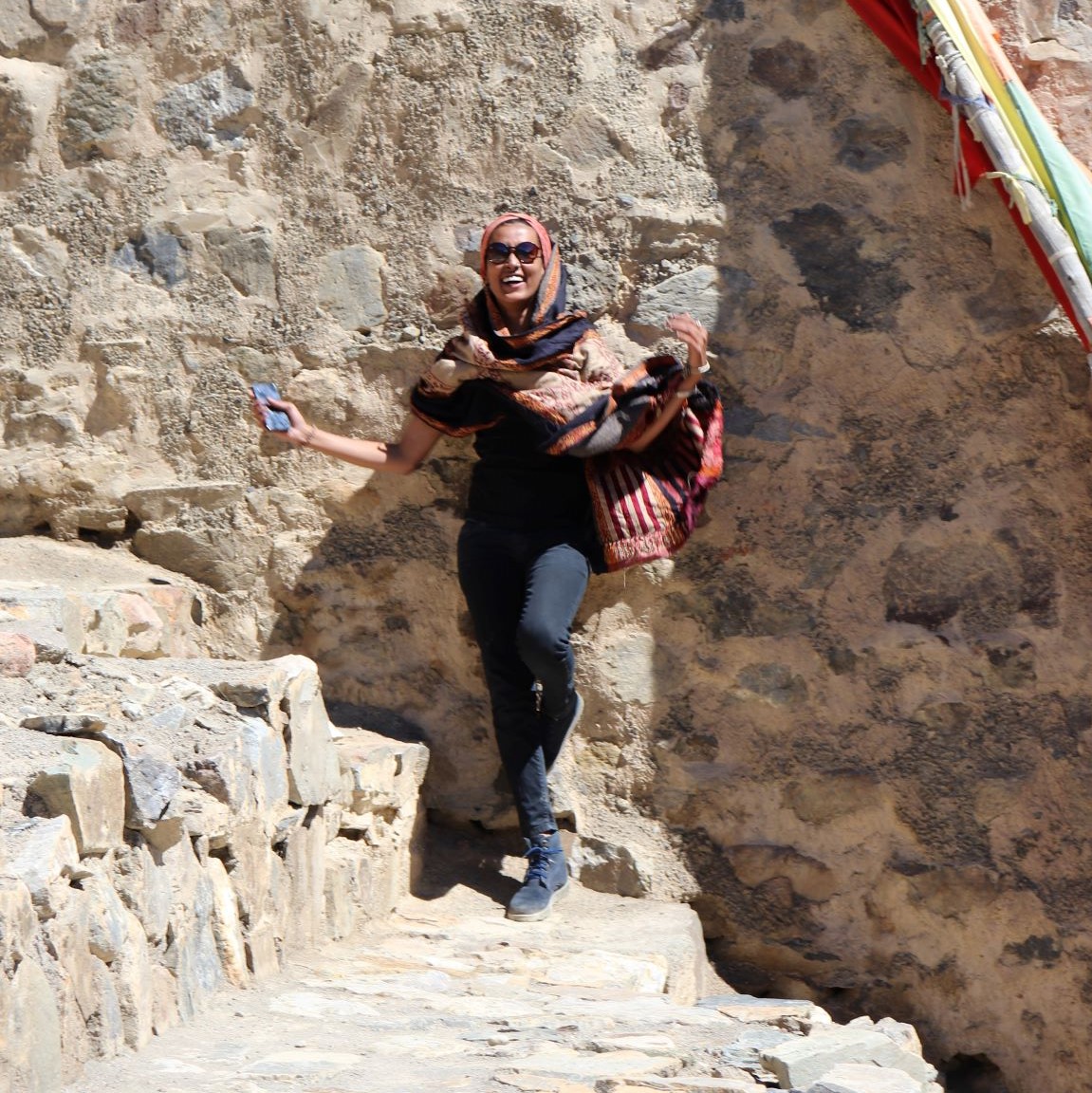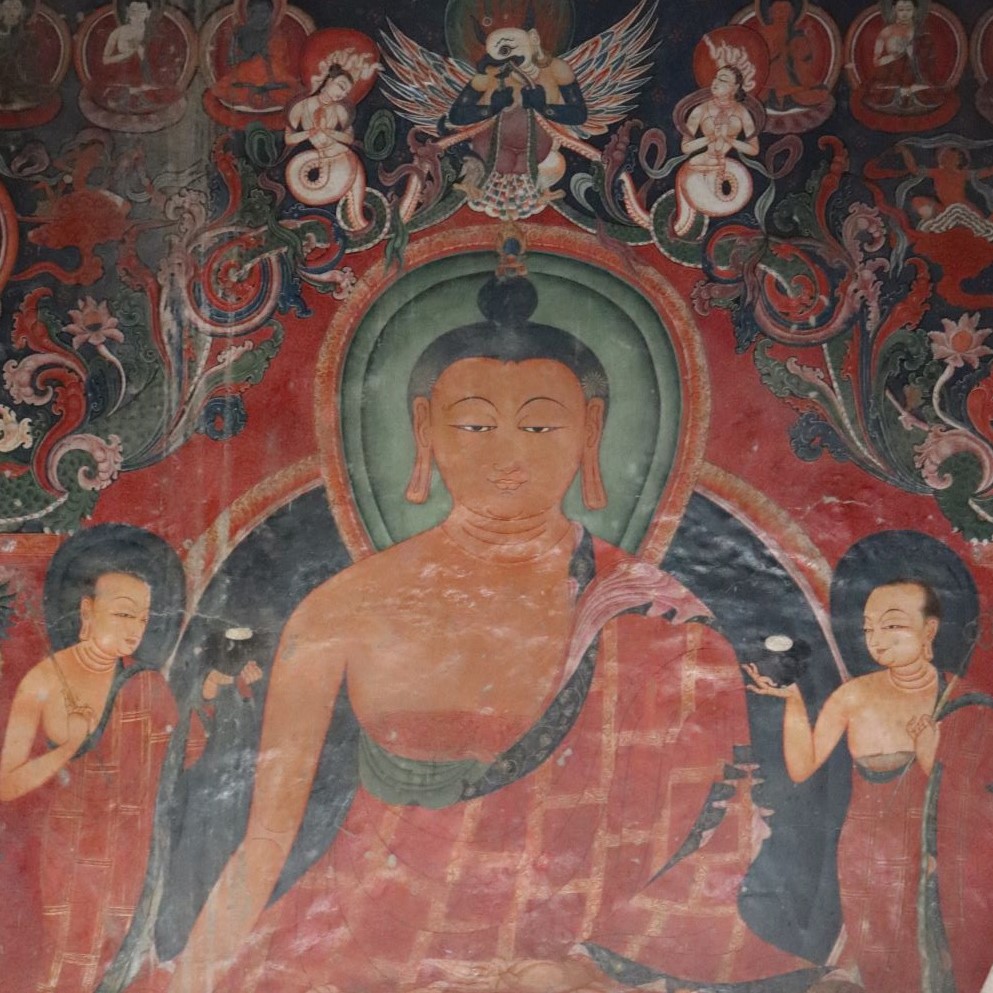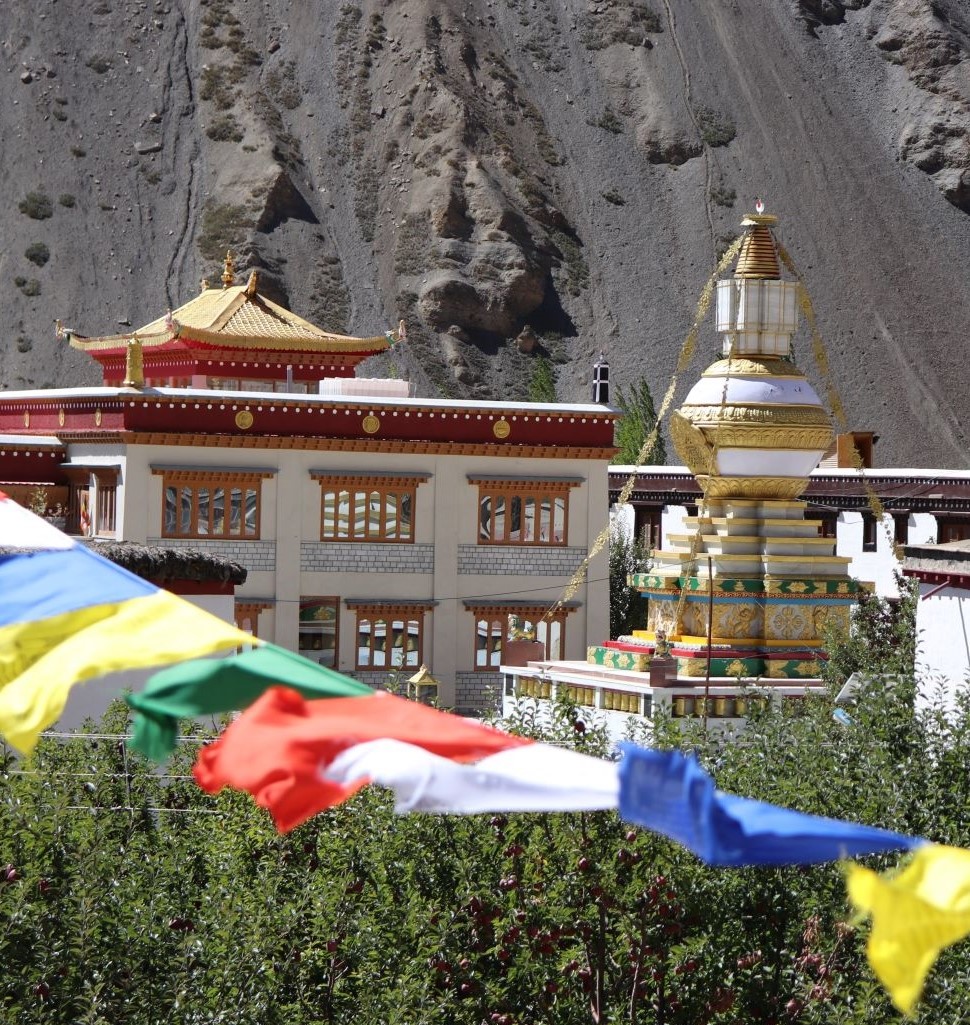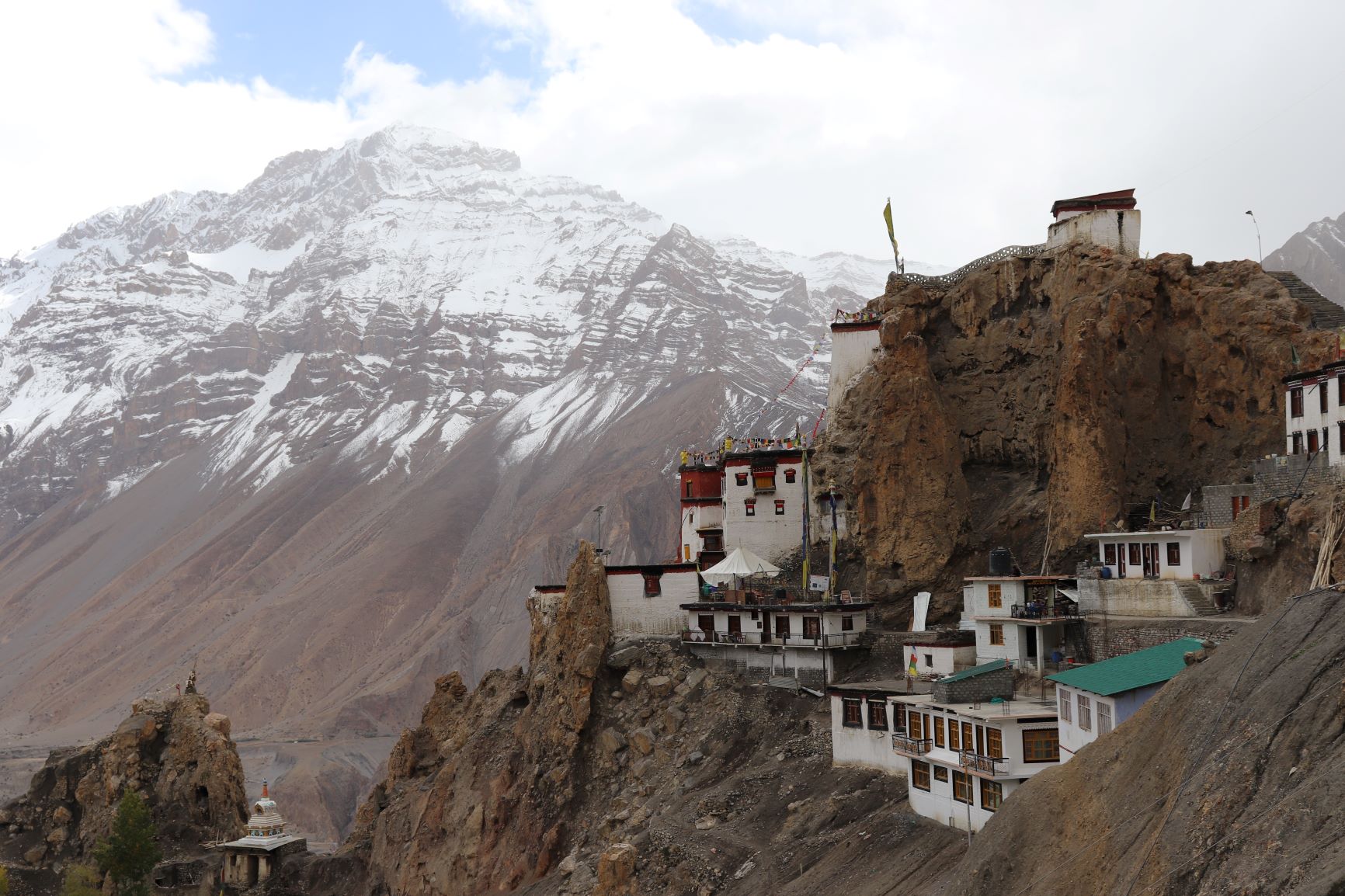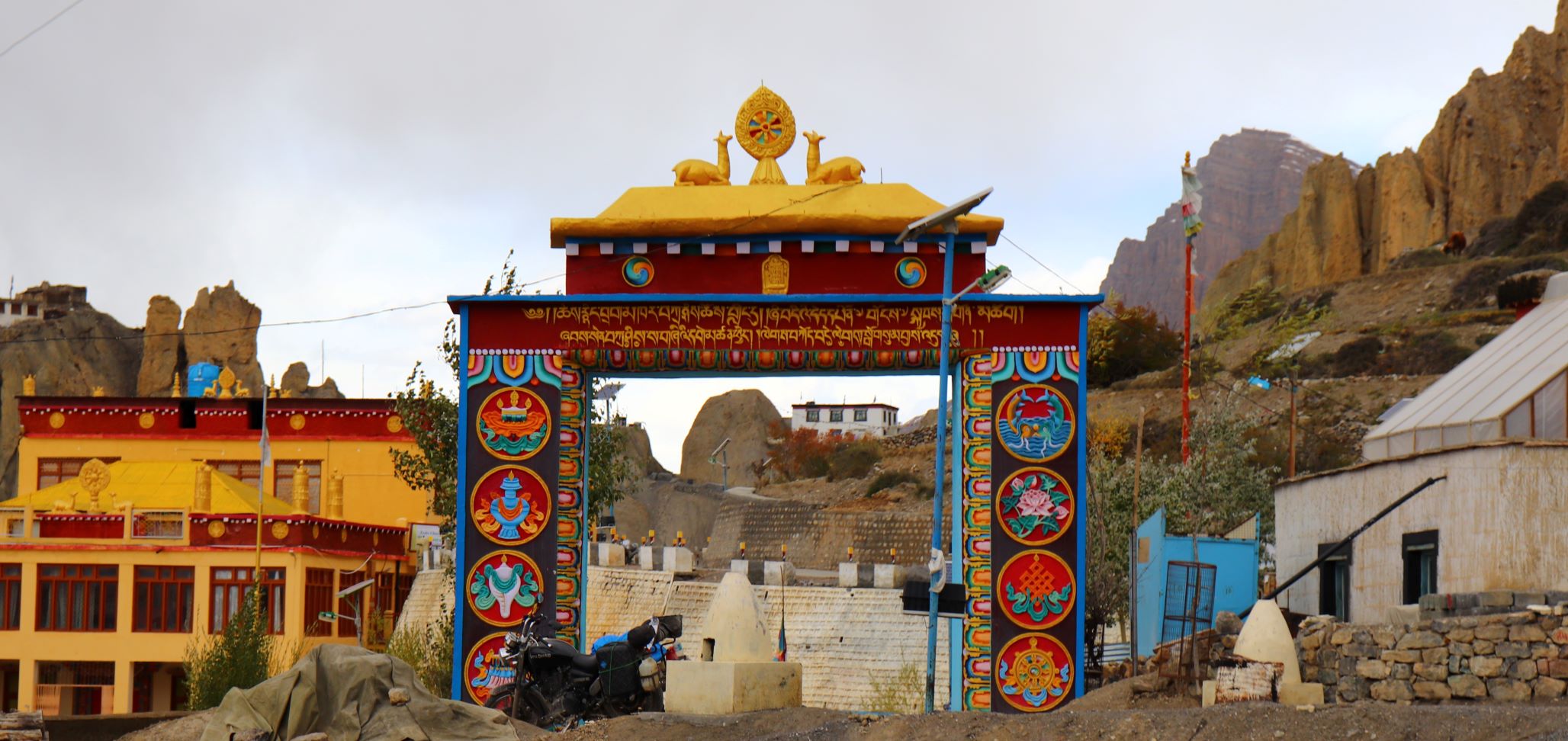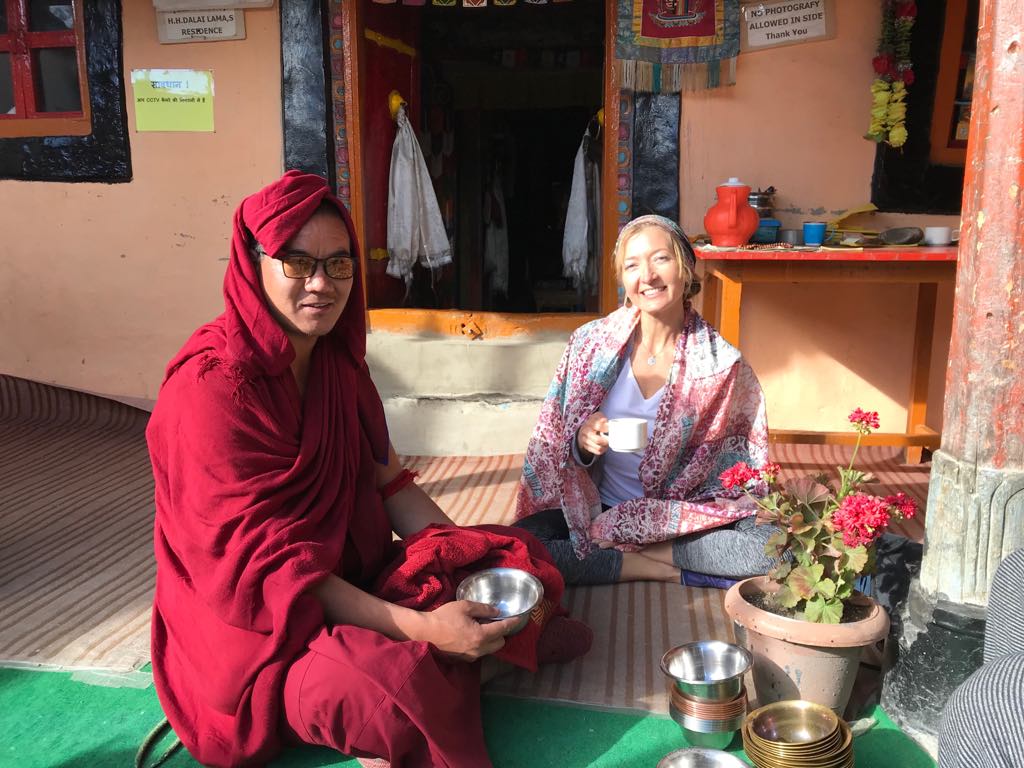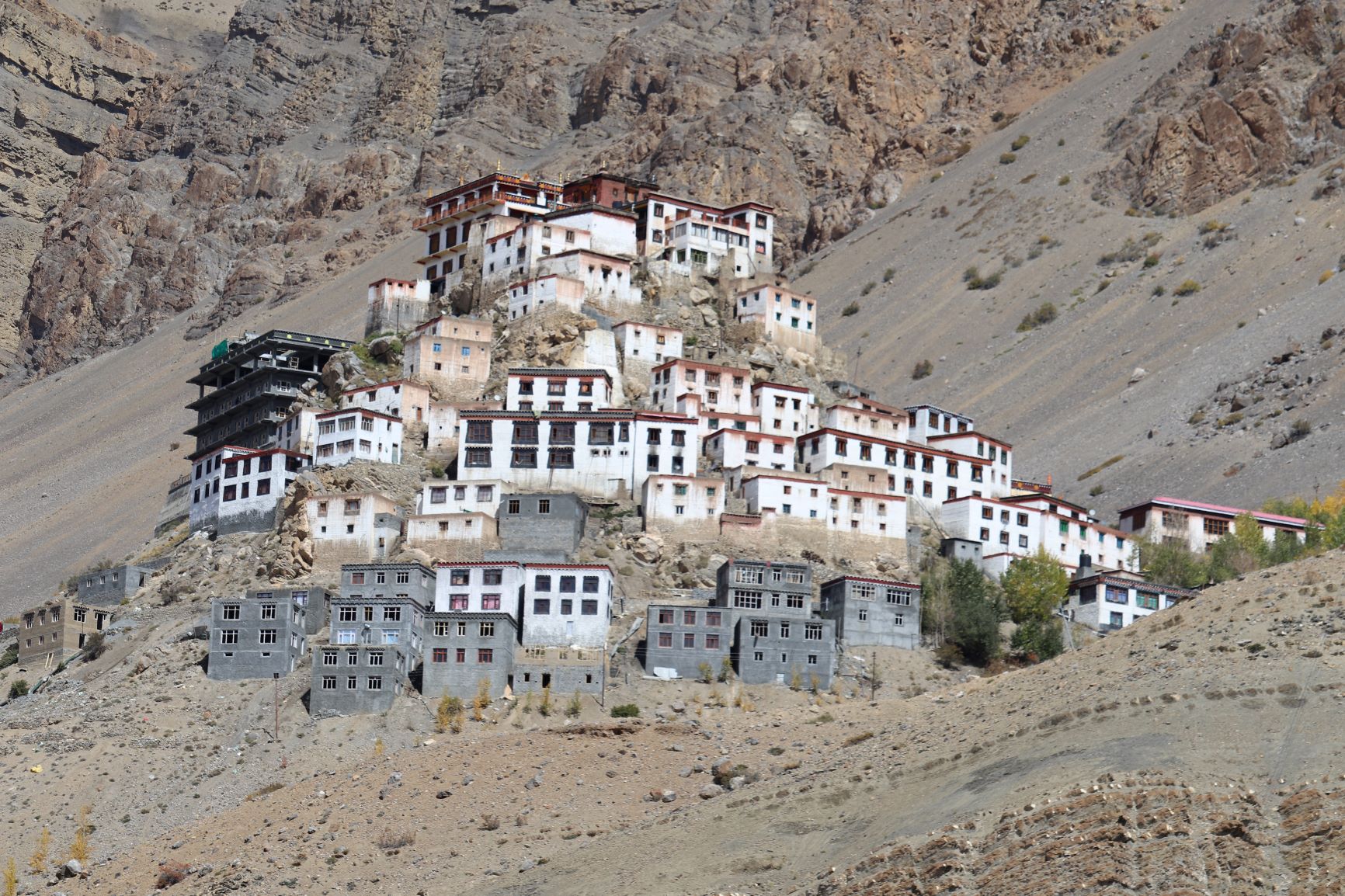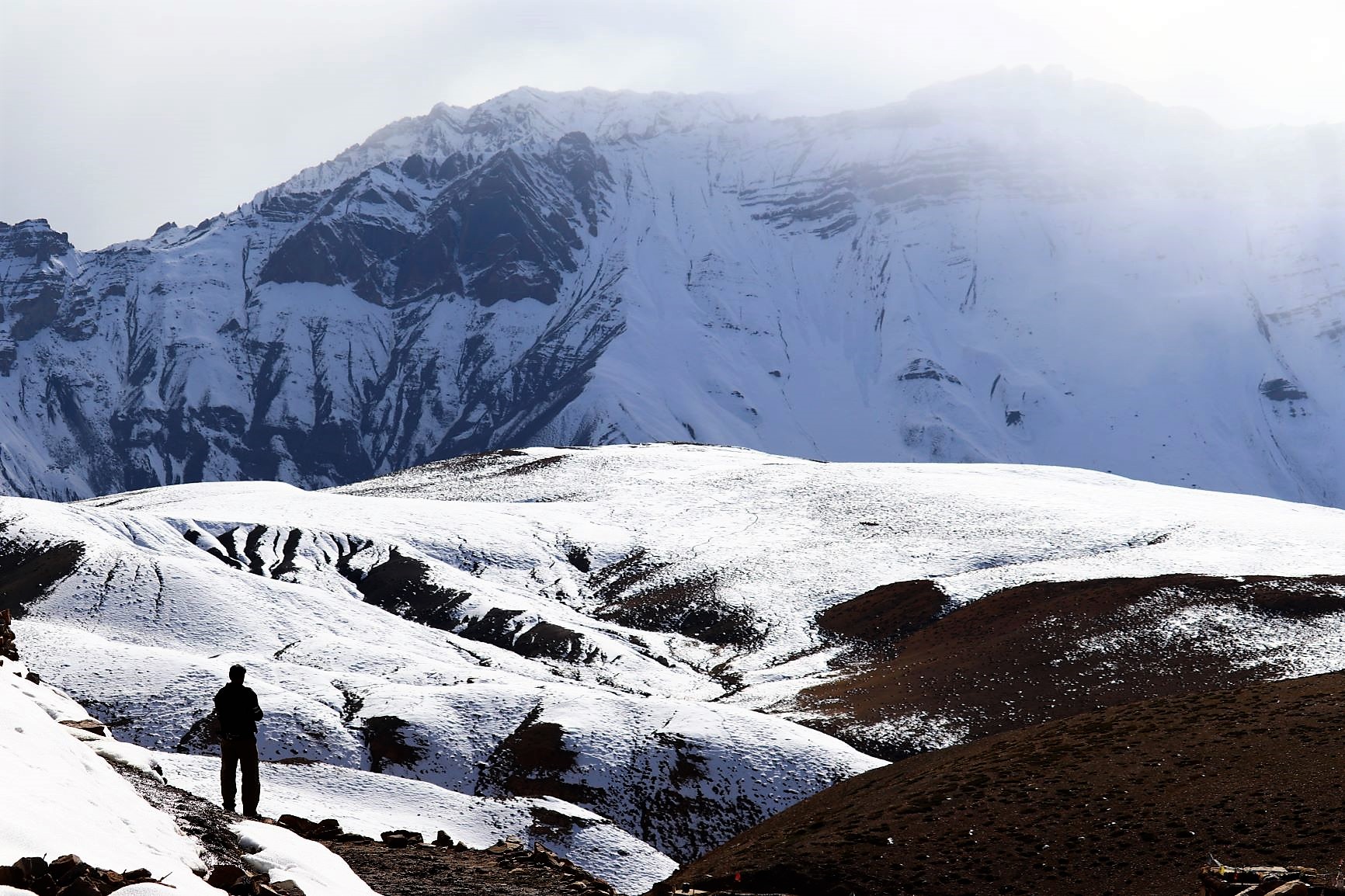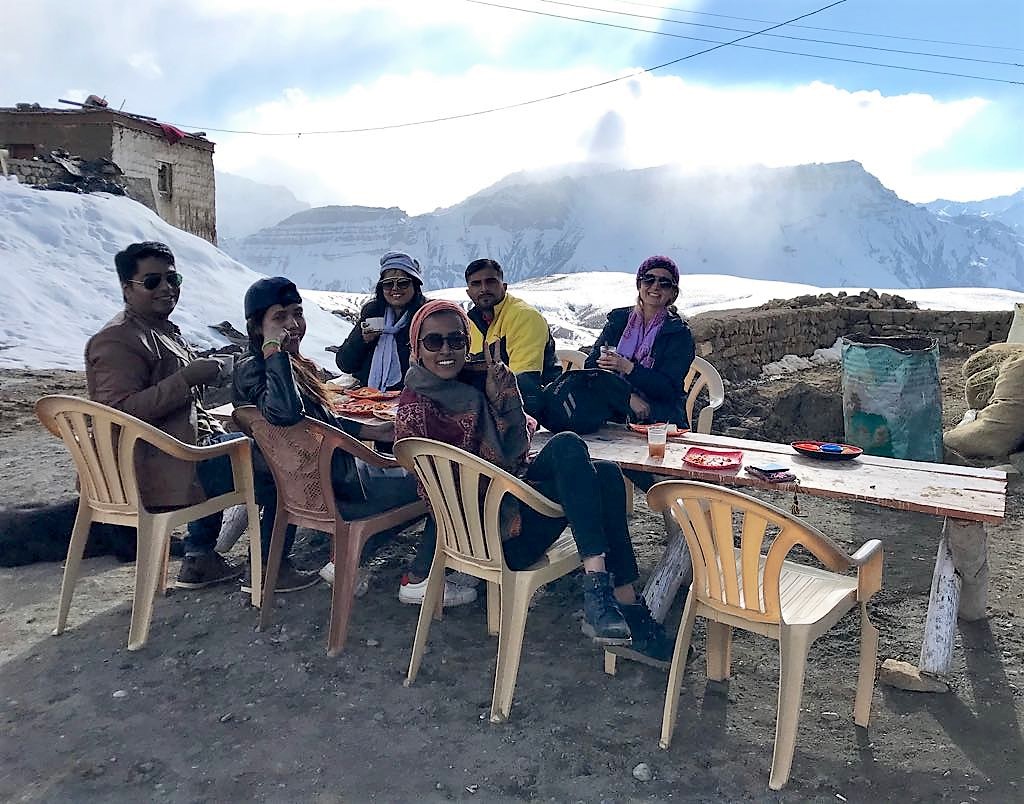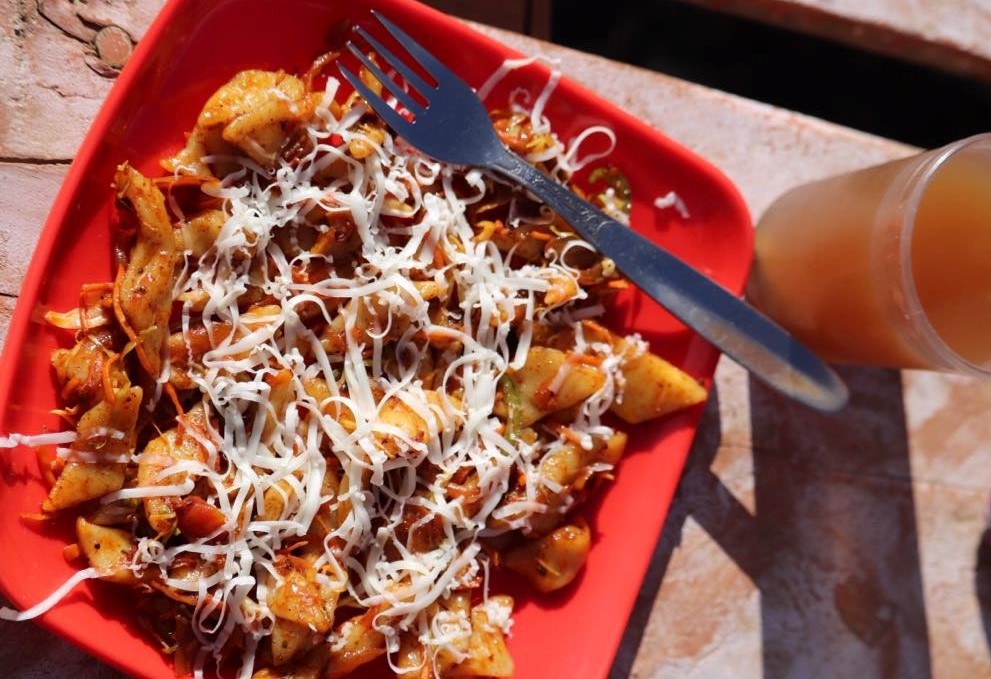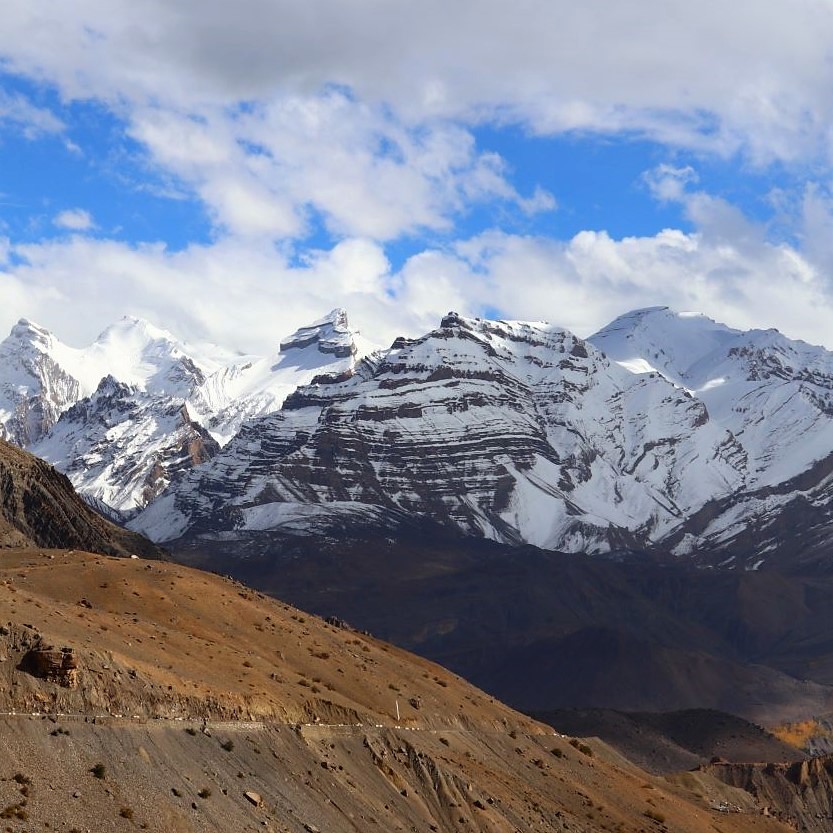In the Land of the Gods
The slender muddy road winds snakelike through the mountains of the Himalayas. We watch in awe through the windows of our Toyota Innova as endless breathtaking landscapes unfold before our eyes. Towering pine-frosted mountains surround us, laced with sections of terraced green fields and occasional clusters of vibrantly colored houses and wooden monasteries with artistically sloping slate roofs. The graceful rows of mountains stretch back toward the horizon as far as the eye can see, fading to a hazy blue in the distance, their peaks swallowed by the puffy white clouds that meander across the baby blue sky. It rained for the past three days but today the sun has returned in his full glory.
We’re driving towards Spiti Valley, a remote section of the Indian Himalayas described by Rudyard Kipling as “a world within a world ... a place where the gods live.” It feels like an accurate description.
Ladot
With me in the SUV are my friend Nesha from Bangalore, 3 passengers from Mumbai and our driver, Bunty. We’re on Day 3 of a 9 day journey of a customized tour with Classic Expeditions, following an itinerary designed to take us in a wide half circle northwest from Shimla, along a route 25 kilometers from the Tibetan border through Kalpa, Tabo, Kaza, Chandratal and finally back east to Manali. That was the plan. But we’ve already learned that in this territory, things don’t always go according to plan.
And that’s the reason we’re on this tour in the first place. We’re usually DIY adventure people, but prior research informed us that in this remote area, prone to frequent road closures especially at the onset of winter (exactly the time of our visit, late September), you don’t want to be driving through these mountains by yourself. Now, if you have all the time in the world, you could get around by local transportation and stay for weeks or months in different places, but we had a window of 9 days, so guided tour was our best option.
Luckily for us, our driver turned out to be a charming guy from Shimla district who’s been driving through Kinnaur and Spiti Valley for over 10 years, and – major perk - he knows all the best places to eat in these parts. More about that later. But back to the beginning.
Our journey started out beautifully, in the mountain town of Shimla,
surrounded by rows of green mountains and light misty clouds that hover above and between them. Shimla enchanted me, even though it rained the whole day we were there. I wasn’t expecting it to be so big and beautiful. Walking down the street, my umbrella sheltering me from the raindrops, the lights of the town reflecting on the glistening wet pavement while vibrant Indian music pulsated from a nearby building (it turned out to be Shimla Fest 2018), I felt the infectious vibrance and passion of India seeping into my soul. I can’t say enough good things about our beautiful hotel, Hotel Baljees Regency, their fantastic service and incredible buffet breakfast. Staying there was pure delight.
The following morning, we met up with Bunty and the rest of our tour group and set out for our first destination: an exotic, secluded, newly built campsite far from civilization, in the middle of an apple orchard. The closest village was picturesque Ladot, which we saw only from afar, and which has no roads connecting it to the outside world.
Parasol Camp near Ladot; photo credit Sandeep Sharma
We loved Parasol Camp, an exotic combination of rustic, natural and thoughtful design. The tents are sturdy and spacious yet cozy with floors covered with thick heavy rugs, comfortable beds and attached bathrooms with gravel floors. They were unheated but they brought us hot water bottles to sleep with at night and there were plenty of blankets. They heated water for us in the morning for bucket showers. The staff were sweet and kind, every meal was delicious and the scenery around us was spectacular.
The following morning, we set out from the campsite for an hour and a half drive to the stunning views of 12,303 ft high Chansal Pass. After braving the frigid winds to admire the stunning views for a while, we started the return journey back, stopping to eat a packed lunch of apples and fried rice near a scenic hilltop temple. There, as if we’d stepped into a chapter of The Alchemist, we crossed paths with a shepherd herding his flock of 50 or so woolly sheep across the hills.
Above, left to right: apples at Parasol camp; the shepherd and his sheep; view from Chansal Pass
Ten minutes or so after resuming our journey along the winding dirt road back to camp, we came to a sudden halt in front of an unexpected roadblock. A giant pine tree, its trunk about 6 feet in diameter, had come uprooted from the soil and now lay sprawled squarely across our path.
Bunty got out to take a closer look. I followed him.
“That wasn’t there before,” I comment, stating the obvious.
“No,” he agrees.
“Is there another way back?”
“No.”
Another vehicle is trapped with us, a bus of 18 or so locals, mostly men, on their way from one neighboring village to another. Someone makes a phone call and reports that a car with a tree cutter will be here in 2 or 3 hours.
It’s about 3:30 in the afternoon, drizzling lightly and chilly but not freezing. We’re well fed with a comfortable vehicle to wait in. No one complains.
We walk around a little but spend most of our time inside the Innova where it’s dry and our body heat keeps the air comfortably warm. Some guys from the bus build a bonfire. How they managed to get the wet wood to burn is a mystery to me.
Without even a hint of wifi signal in these parts, we find creative ways to pass the time. Two hours are spent watching a Tollywood movie on our driver’s cell phone. I’ve heard of Bollywood, of course, but Tollywood is new to me. I learn Tollywood refers to movies produced in South India, in the language Telugu. Bollywood refers to movies in Hindi. There’s also Kollywood, referring to movies made in Kannada, another language of South India, as well as too many other -ollywoods to keep straight.
This movie, Surya, was filmed in Hyderabad in the Telugu language, but the version on the driver’s phone is dubbed in Hindi, not that it makes any difference to me. It does make a difference to Nesha, since Hindi isn’t widely spoken in South India and it’s not one of the three languages she speaks fluently. (Complications of a country with 22 official languages.) The acting and music is as dramatic as a Latin American telenovela. Every 20 minutes or so fist fights and intense arguments break out for incomprehensible reasons. Occasionally the characters mix a sporadic line or two of English into their dialogue, which is helpful. There’s a visually stunning dance scene near the end.
Shortly after the movie, just when we’ve began silent meditation, our long-awaited rescue car arrives. Unfortunately the fallen tree is bigger than its equipment can handle. Another phone call is made and eventually we’re given the update: a JRC (a small bulldozer) is on the way from the not-so-nearby village of Chirgaon. It’s expected to reach us by 10 or 11pm and then it may take an hour or two to clear the tree.
It’s currently 5:30pm. We’re starting to get hungry and restless, and no one is thrilled about the idea of spending another 6 or 7 hours here.
We ask how far it is to the campsite. 10 kilometers, they tell us. Nesha and I announce that we’ll walk back.
Sandeep, the tour coordinator, who has accompanied us on this leg of the journey, shakes his head. “It’s raining, the roads are very bad, and it will be dark in half an hour. And we’re in the forest; there are leopards.”
Delicious breakfast at Parasol camp.
Nesha and I look at each other, thinking the same thing. This wouldn’t be our first night hike through an Indian jungle forest filled with predatory wild animals. We survived the first one unscathed so we’re pretty confident we could handle this one too. But, it’s cold and raining. We decide to wait with the car.
A few more hours pass by. We’ve just started listening to a guided meditation in Hindi when Bunty brings good news: the JRC has arrived.
It’s only 8pm - well ahead of schedule. We scream with excitement and abandon the meditation to see this sight with our own eyes.
Sure enough, the small yellow JRC is there, headlights on. Happily its operators make quick work of hacking the trunk into smaller pieces and moving them off the road. By 9:30pm, the road is clear and we’re on our way back to the camp, where a delicious meal is served in our heated dining tent and we celebrate by spiking our honey lemon ginger tea with Old Monk rum (if you appreciate rum, you must taste Old Monk when in India, because 1) it’s named Old Monk, and 2) it’s very delicious and very inexpensive.
The fallen tree was only the first of several roadblocks of the trip,
but it was the longest delay. The others we encountered later were caused by snow or small landslides that left piles of rocks heaped across the road. Most of the rock piles were cleared away in an hour or less, sometimes with JRC’s, sometimes with shovels. Others left roads closed for a day or more, causing us to deviate several times from our planned route.
But we knew of these risks when we signed up for this tour. And the experience was well worth the delays and deviations from the plan. Roadblocks and all, it was an unforgettable nine day journey through some of the most majestic terrain on earth. Jagged stone cliffs, vast open spaces, rugged trees that find life from roots ensconced in solid rock, gleaming snow-covered mountains under brilliant blue skies.
Dhankar
Here I’ll try with words and photos to share a glimpse of the magic of a few of those places, to transport you there, for a virtual taste of the most unforgettable moments. I know words and photos aren’t enough. But I’ll try anyway.
We each had our favorite spots.
For me, one of the most unforgettable was the walk from Roghi Village to Kalpa, through Suicide Point, 225 kilometers northwest of Shimla. This morbidly named place turned out to be absolute magic. We had driven through it, from Kalpa to Roghi, and Nesha and I decided to return to our hotel on foot while everyone else drove back. The walk took us about 3 hours – 3 hours of indescribable awe. Through Suicide Point, we followed a thin road carved along the edge of a steep cliff face that plummets straight down to a valley far, far below. I don’t know how far the drop is, I only know if you happened to tumble over the edge, we wouldn’t hear from you again.
Suicide Point
After the cliff, the road curves gently through the mountain. As we walked, to our right stood rows of tall, elegant pine trees. Past them in the distance, the towering snowdusted peaks of Kinner Kailash flirted with puffy white clouds backdropped by a vivid blue sky.
On our left, a wall of solid rock rose up toward the heavens. Yet somehow, in this compact rock, a smattering of trees flourished, their roots submerged firmly in the rock face. We marveled at how they could find life in that foundation of stone. It made us wonder, what else is possible?
We saw one tree with two long exposed roots like arms wrapped around a large boulder, as if in an embrace. As if to say, “I got you.”
I wish I could transmit the emotions that overwhelmed us here, during this walk. If you have been to similar places, maybe you know what we felt. You’ll know that the photos can’t capture the sheer immensity of this place. The feeling of space. The feeling of absolute awe that brings tears to your eyes and leaves you speechless.
It’s as if the place itself shocked our conscious minds into silence beyond words and something deeper, something primal within us, connected to something greater.
In this place far beyond the reach of cell signal, we felt a different kind of connection. That spiritual energy that India is famous for, I never felt so deeply anywhere as here in this place. There aren’t words to express this feeling. It was overwhelming. We didn’t know what to do with the emotion; we felt that our hearts might burst. Finally the only thing I could do was come to my knees and bow in gratitude and awe of the inconceivable Power that created this masterpiece of a planet.
There were other times along the journey I felt this awe. A few times the intensity of the beauty seen through the window of the Innova as we traversed the isolated roads was enough to bring tears to my eyes. It’s interesting what beauty can do to the soul.
Tabo was magic for Nesha,
with its 10th century monastery showcasing a blend of ancient, well-preserved Indian and Tibetan art and its solid rock caves in the mountainside, furnished with carpets and prayer flags and enclosed by wooden doors. .
Above: Tabo
The tiny village of Dhankar,
its breathtaking views, its silence and its thousand year old monastery captivated me. We stopped here for lunch on the way from Tabo to Kaza, and it was exceptional. (Thank you, Dhankar Heights Restaurant.) It was here that I discovered lacha parathas (extremely flaky parathas where the batter is poured in a beautiful spiral shape) and my life will never be the same. The mutur mushroom dish was delicious too. I learned to say kaffi swadisht – “that was delicious”, in Hindi; a phrase I had many occasions to use in the following days.
Dhankar
Dhankar is almost completely disconnected from the outside world, without wifi or cell reception or newspapers. I asked some locals how they feel about this lack of connection. They think it’s heaven.
Dhankar monastery is perched precariously on a 300 meter high spur on the side of the mountain, with jawdropping views from the back side. Inside, a kind monk named Giachho (pronounced “Ja Cho”) invited me to have a chai with him and his neighbor Sonam and we had a lovely chat. From him I learned that all the people of Spiti have Tibetan names, for some reason. They don’t speak Tibetan and he doesn’t know why they have Tibetan names, they just do.
View from Dhankar monastery
Above: Dhankar monastery & neighboring buildings; Dhankar entrance gate; tea with Giacho; white town we drove by later whose name I don’t know
Above: Dhankar monastery
We all loved Kaza,
our next stop after Dhankar, home to the cozy Himalayan Café and great little shops selling thick Tibetan shawls made from Yak wool, knitted socks and hats and other great items.
From Kaza we took a day trip to Komik, the highest village in Asia, situated at an altitude of 14,806 feet. There we had lunch at Spiti Organic Kitchen, which signs informed us is the world’s “heighiest” restaurant connected by road. The views and the food were phenomenal – especially the Qu, pasta with local wild onion, cheese and veggies, the stuffed Spitian bread, and the Mini Pancakes.
The view from Komik
And this brings me back to the topic of food, which I promised to say more about. To summarize, the meals we had … almost every one deserved a trophy. The flavors, the spices, the textures, the pleasure every bite gave us. Breakfasts of aloo paratha and sooji upma and chola bhatura and tangy pickle and lunches and dinners of thalis and curries and daals and paneer and biryani and chapatis and chai masala with all of the above. Some of the best meals of all were prepared at tiny roadside shacks where a man stands outside over a tandoori oven deftly whipping dough into chapatis while a woman inside a small kitchen is cooking flavorful daals and curries to be served to you on a silver platter with a generous helping of rice. For some of my favorite food spots, click HERE. (Coming soon.)
At some point along the journey we were stuck between a cliff wall and a river for 45 minutes while a roadblock of fallen rocks was cleared away, which gave us the time to meander down to the river’s edge. The riverbed was made of smooth rocks of different sizes, colors and designs. Here again I was awed by Nature’s artistic sense. Each rock featured its own pattern, with attractive streaks of white etched against shades of pale green, pink, purple or gray. Why are they all these different colors and patterns, I wanted to know. Why is each rock a piece of art? But I don’t need to know why. It made me happy just to look at them, to be surrounded by all of this beauty.
The plan was to drive from Kaza to Chandratal and then Manali, but road closures due to heavy snow prevented us from reaching Chandratal and its stunning Moon Lake, and Manali became reachable only by a very long detour; too long for the Innova and the rest of the group. My fearless travel partner and I decided a little snow wouldn’t stop us from getting where we wanted to go. We abandoned the expedition a day early and took an overnight local bus to Manali – an experience which was a story in itself. That’s for another post another day, perhaps. I’ll just say here that we made it to our destination and we lived to tell the story.
And thus ended our first journey through the land of the gods.
This trip was for us a tasting of Spiti Valley, a delicious sampler platter. We covered a lot of ground in a short time, but nine days wasn’t enough to do justice to this immense territory. Even so, we experienced so many moments of magic in that short window. And now we know the places we have to go back to, to stay longer next time.
In the interest of giving a complete picture of this experience, I should mention that in late September, in Kinnaur and Spiti, it’s cold. Very cold. Especially at night. The hotels we stayed in weren’t heated, had a sparse supply of blankets and many didn’t have hot water. I’ve never slept in such freezing conditions in my life, and rarely showered so infrequently. I slept in as many layers as I could possibly fit onto me – usually something like 4 shirts, 2 pairs of pants, 2 pairs of socks, a woolen hat and gloves, huddled in a fetal position. And sometimes I still awoke shivering, that’s how cold it was. If you visit this area in September and you own a portable space heater, you might want to bring it with you. Or a sleeping bag. Or stay in homestays. We didn’t stay in any but I was told they’re warmer because the fire in the kitchen keeps the homes warm.
I hate to be cold, and I really love daily hot showers. But it didn’t matter. The scenery and the food and those moments of indescribable magic were worth it. They were worth the cold air and the icy water and the roadbloacks and the delays. They are the moments that make life worth living. They were worth everything.

